#cynomys
Text

Black-tailed Prairie Dog (Cynomys ludovicianus), family Sciuridae, Wichita Mountains Wildlife Refuge, OK, USA
photograph by Kenny Seals
61 notes
·
View notes
Text

decided to draw my prairie dog oc since squirrel appreciation day was coming up! too bad i didn't manage to post it on squirrel appreciation day.. (it was on the 21st.) i probably should have queued it! anyway, his name is salvatore & he's a leucistic black-tailed prairie dog ^-^
[Image description: A cartoony digital drawing of a white prairie dog with blue eyes. He is standing to the side on all fours, facing right and looking to the left. He has a serious expression on his face. End of image description]
#prairie dog#black-tailed prairie dog#rodentia#sciuridae#cynomys#art#my art#fawnrats art#digital art#feral art#leucism#leucistic#animal#animalia#mammal#mammalia
0 notes
Photo


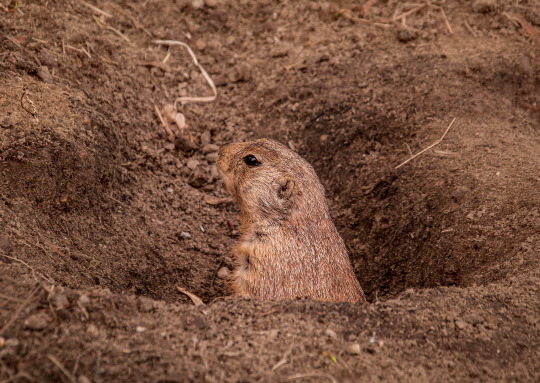

1 note
·
View note
Text

Two Black-tailed Prairie Dogs, one with leucism. Spotted by me in South Dakota.
Oh man, lovely guy! Great find!
185 notes
·
View notes
Text
OK, hear me out. An American version of Watership Down, but instead of rabbits...it's prairie dogs. Just a bunch of prairie dogs living in the American West, and they need to flee land developers and find a new home. They have to flee a bunch of predators, cross through roads and near settlements, until they finally find a new place to settle in an empty, field (unbeknownst to them, located in a national park or otherwise protected area). Other animals come to live in and around the town, and they have to figure that out; they may have to deal with rival prairie dogs like in the original story, until fending them off using trickery and...not speed. They have stumpy legs.
I call it Watership Town. Maybe Wolf Creek Town, after the real location in Colorado? Eh? Eh? Eh, it's a work in progress.
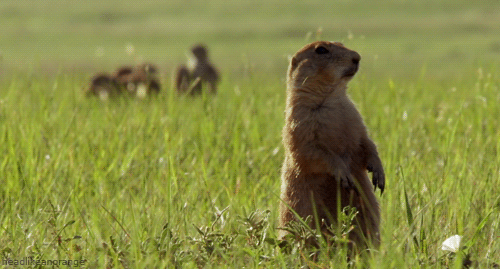
#watership down#prairie dogs#cynomys ludovicianus#prairie dog town#watership town#writing ideas#I'm telling you#it's genius#I AM A VISIONARY#richard adams#probably plagiarism
11 notes
·
View notes
Photo

大豆の大群じゃん
@上野動物園
27 notes
·
View notes
Text



Today's mood
#37°C#my insides are gonna boil#its so hot#black-tailed prairie dog#Cynomys ludovicianus#lazy#hot summer days
2 notes
·
View notes
Text
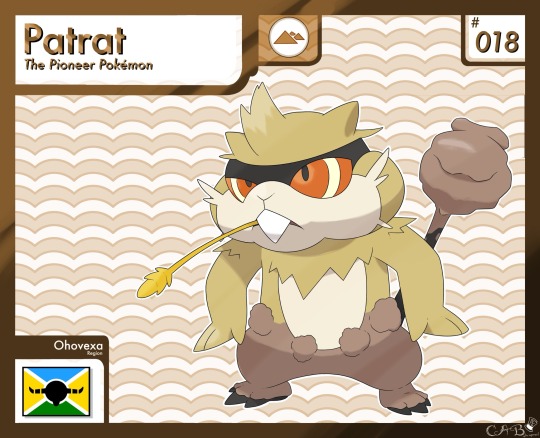



Patrat, the Pioneer Pokémon!
Description: Ohovexan Patrat is a natural architect, building large networks of tunnels beneath the entire region. These burrows can stretch several miles, and their builders are very protective of them. This attitude is appreciate by other Pokémon that use these tunnels for their home, such as Dusterel, Bunnelby, Durant, Ohovexan Torkoal, and Psammowl. All of these Pokémon are underneath Patrat's purview, and will be protected as long as they live within the tunnels. Dirt is permanently stuck in Patrat's hair, especially gathering on their tails. If any intruders or potential predators are detected near the burrows, a Patrat will raise the alarm and begin throwing balls of packed dirt at the interlopers. Their most prominent enemy is Ohovexan Furret, which live within the burrow networks, and hunt Patrat down as prey.
Well, well, well, it’s about time I got to this profile of mine! So, this profile is meant to showcase Pokemon from different regions, other than the one my main account is highlighting (currently Laneoki). Ohovexa is a region of vast grasslands and expanses, based upon the northern Great Plains region of the USA. Ohovexan Patrat in particular is based on the black-tailed prairie dog (Cynomys ludovicianus), as well as on deputies and the pioneers of western towns in America’s past! A number of Pokémon from this region are about to show up in the Ultimate Safari Zone! So stay tuned!
#pokemon#Pokémon#fan made pokemon#fanmade pokem#fakemon#fakemon art#fakemon artist#fakemon dex#fakedex#fakemon design#fakemon region#ohovexa#great plains#ohovexa region#regional variant#regional variant pokemon#variant pokemon#black-tailed prairie dog#prairie dog#Cynomys ludovicianus#ground-type pokemon#ground-type fakemon
16 notes
·
View notes
Text
"Mexico’s government recently announced the creation of 20 new protected areas across 12 states and two coastal areas in the country, covering roughly 2.3 million hectares (5.7 million acres). This follows a series of budget cuts to the nation’s environmental agencies.
Officials introduced four new national parks, four “flora and fauna protection areas,” seven sanctuaries, two biosphere reserves and three “natural resources protection areas” under the protection of the National Commission of Protected Natural Areas (CONANP).
“This is a commendable step toward biodiversity conservation and environmental protection,” said Gina Chacón, director of the Wildland Network’s public policy program in Mexico. She told Mongabay these new areas will help preserve the country’s rich ecosystems, foster sustainable practices and protect a broad range of important species and habitats. Though some environmental and Indigenous groups are wary the budget cuts could hinder efforts to conserve these areas.
The newly protected areas will preserve habitat and ecologically important marine areas for various species, including whale sharks (Rhincodon typus), Mexican prairie dogs (Cynomys mexicanus) and jaguars (Panthera onca). They will also help safeguard ecologically important coral reefs and areas of cultural significance to Indigenous communities.
Bajos del Norte, a new national park in the Gulf of Mexico, is the largest new protected area, covering 1,304,114 hectares (3,222,535 acres), almost nine times the size of Mexico City. The area is important to the more than 3,000 families that belong to fishing communities on the Yucatán coast. It is also one of the main grouper fish (Epinephelinae) reproduction sites in the Gulf of Mexico and will safeguard threatened species, such as the rocky star coral (Orbicella annularis) and the hawksbill turtle (Eretmochelys imbricata).
Joaquín Núñez Medrano, the secretary of the UEFAHG or Union of Forestry and Agricultural Ejidos Hermenegildo Galeana A.C. (Unión de Ejidos Forestales y Agropecuarios Hermenegildo Galeana), lives in an ejido — a type of communally owned land used for agriculture and forestry purposes — called Cordòn Grande in Sierra Grande of Guerrero, along the Pacific Coast. For more than 10 years, Medrano’s community has monitored species such as the jaguar and sustainably managed the ejido’s natural resources, without government assistance.
But now, the ejido has been designated a protected area in this latest round of decrees, as it falls inside part of the new Sierra Tecuani reserve. “The goal is to strengthen what we have already been doing but with support to do it much better,” he told Mongabay.
The second- and third-largest newly protected areas are Sierra Tecuani, a 348,140-hectare (860,272-acre) biosphere reserve threatened by illegal logging, forest fires and land use changes, and the Semidesierto Zacatecas Flora and Fauna Protection Area, which is important for the recovery of the Mexican prairie dog.
The state of Oaxaca is where the government created the most new protected areas, numbering three: the 90-hectare (222-acre) Playa Morro Ayuta Sanctuary, the 56-hectare (138-acre) Barra de la Cruz-Playa Grande Sanctuary and the 261-hectare (645-acre) Playa Cahuitán Sanctuary. Other protected areas were created in the states of Quintana Roo, Veracruz, Campeche, Nayarit, Zacatecas, Chiapas, Colima, Durango, Jalisco, Chihuahua, Guerrero and the State of Mexico...
President Andrés Manuel López Obrador has protected more areas than any previous administration, with a total of 43 new areas across 3 million hectares (7.4 million acres). But Mexico’s Secretariat of Environment and Natural Resources (SEMARNAT), which works to safeguard the environment, has become severely cash-strapped throughout his six-year term.
SEMARNAT is one of many sectors in Mexico undergoing funding cuts. In recent years, Obrador’s government has implemented a series of strict austerity measures to free up more money for other areas like pensions and wages, boosting the leader’s popularity among citizens, particularly the working-class. Judicial workers, health services and academia have also had their budgets slashed in 2024...
Juan Bezaury-Creel, the director of the organization Fundación BD BioDiversidad Mexicana, said a protected area is better than no protected area because, once a decree is formalized, the government has a duty to protect it. However, this puts “huge pressure on existing personnel because they have to take care of more surface area with less resources,” he told Mongabay.
“The personnel from CONANP are heroic,” he said. “They are putting their lives on the line many times with little budget and little help.”"
-via Mongabay, January 25, 2024
#mexico#lopez obrador#andrés manuel lópez obrador#protected areas#environment#deforestation#environmental issues#national park#gulf of mexico#yucatán#oaxaca#endangered species#good news#hope#whale shark#prairie dog#jaguar
336 notes
·
View notes
Text

Black-tailed Prairie Dog (Cynomys ludovicianus), family Sciuridae, found across the western Great Plains and eastern Rockies of North America
photograph by Steve Polkinghorne
51 notes
·
View notes
Text
Uncharismatic Fact of the Day
Humans aren't the only animals that organize themselves into towns or, in some cases, entire cities! The largest black-tailed prairie dog colony on record, located in Texas, USA, was 6,474,970 hectares (25000 mi²) and contained an estimated 400 million animals. The largest human city in Texas is Houston; it's only 665 mi² and contains just over 2.2 million people.
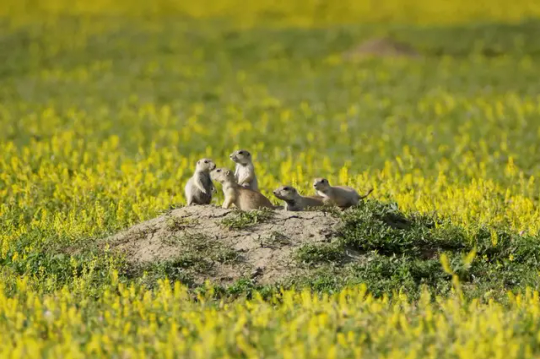
(Image: A family group, or coterie, of black-tailed prairie dogs (Cynomys ludovicianus) by Jeff Zylland)
If you send me proof that you’ve made a donation to UNRWA or another organization benefiting Palestinians– including esim donations– I’ll make art of any animal of your choosing.
#black-tailed prairie dogs#Rodentia#Sciuridae#prairie dogs#squirrels#rodents#mammals#uncharismatic facts
65 notes
·
View notes
Text


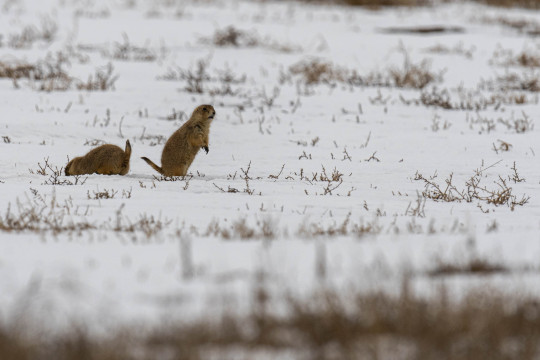
Black-tailed prairie dogs (Cynomys ludovicianus)
Rocky Mountain Arsenal National Wildlife Refuge, Colorado, USA
hinono’eino’ biito’owu’ (Arapaho), Ndé Kónitsąąíí Gokíyaa (Lipan Apache), Núu-agha-tʉvʉ-pʉ̱ (Ute), Tséstho’e (Cheyenne), and Očhéthi Šakówiŋ land
#original photography#wildlife photography#photographers on tumblr#nature photography#winter#snow#colorado#rocky mountain arsenal#wildlife refuge
40 notes
·
View notes
Text

Grzimek's Animal Life Encyclopedia, vol. 11, Mammals II. 1972.
1.) Speckled ground squirrel (Spermophilus suslicus)
2.) European ground squirrel (Spermophilus citellus)
3.) Groundhog (Marmota monax)
4.) Black-tailed prairie dog (Cynomys ludovicianus)
#rodents#speckled ground squirrels#european ground squirrels#groundhogs#prairie dogs#black-tailed prairie dogs
84 notes
·
View notes
Note
Not to "well actually-" the hamster jokes, but if you're interested, Gravel's animal is a prairie dog! "Senomy" is derived from the scientific name "Cynomys" and they make distinctive kissing gestures at each other. Even her playstyle is probably because their main defense against predators is to disappear into their burrows and pop up somewhere else.
IS THIS WHY GRAVEL KISSES YOU
HAS IT BEEN A NERDY ZOOLOGY JOKE ALL THIS TIME
112 notes
·
View notes
Text

Cynomys ludovicianus, Black-tailed Prairie Dog. Captive. Arizona-Sonora Desert Museum. April 2022.
#april 2022#2022#arizona-sonora desert museum#animal photography#black-tailed prairie dog#nature photography#rodents
9 notes
·
View notes
